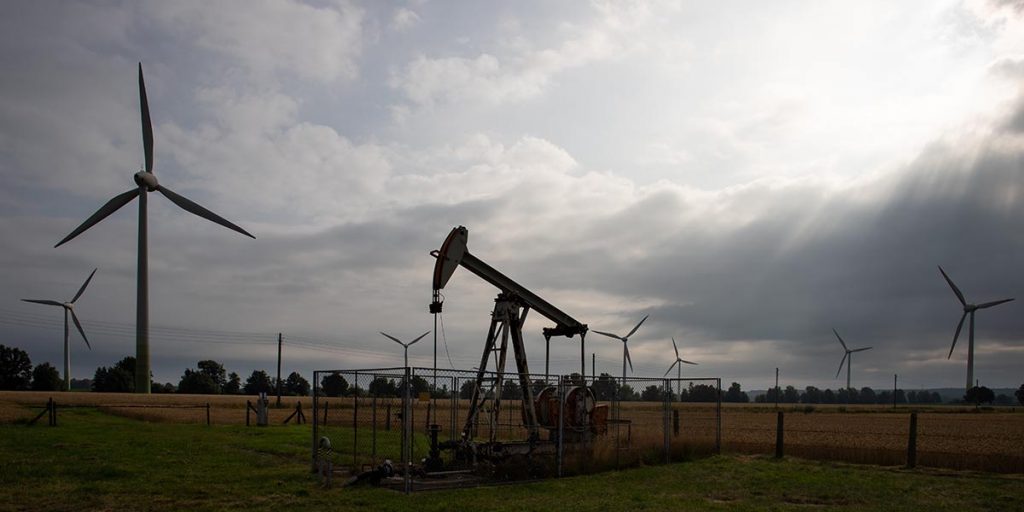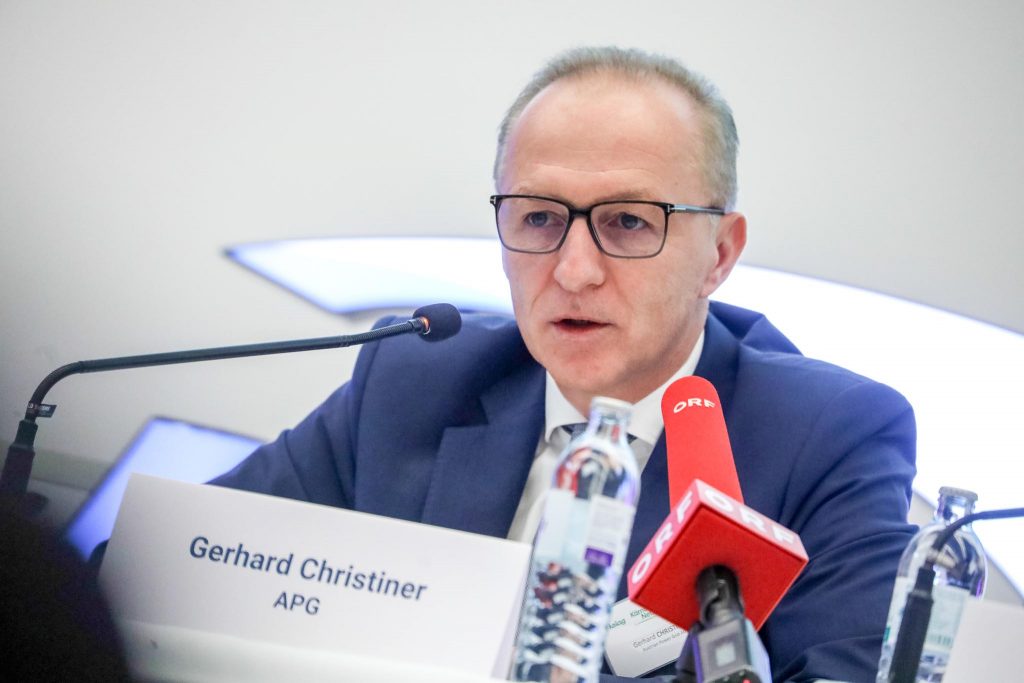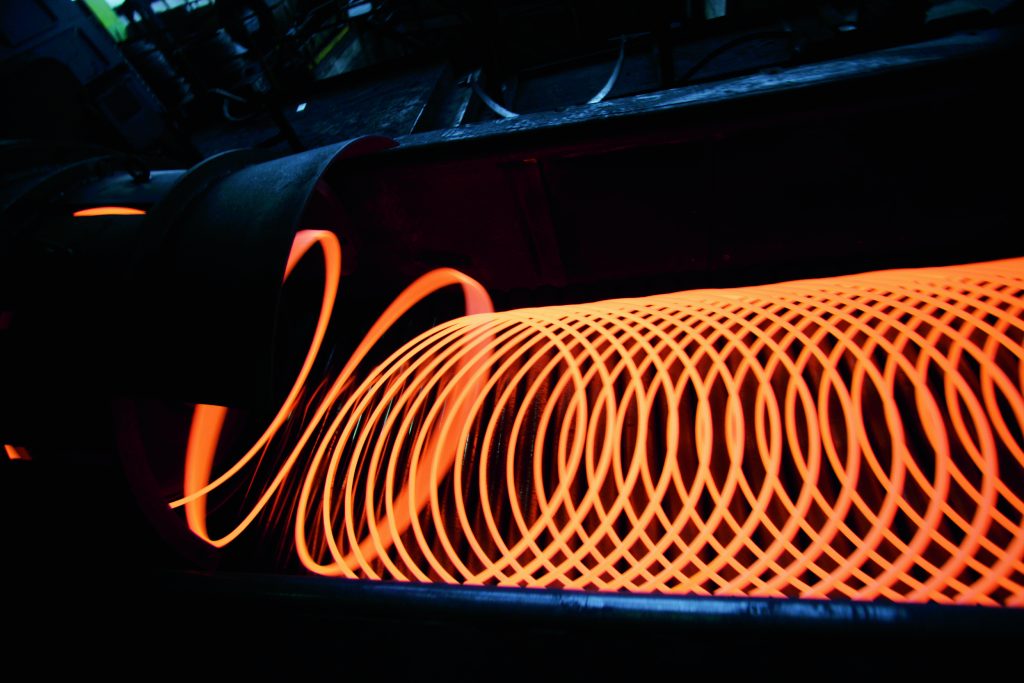In addition to economic stimulus measures, the Austrian federal government presented the long-announced Renewable Heat Package (EWG). The measures, totaling six billion euros, are intended to fuel both the energy turnaround and the construction sector, which is weakening due to the difficult economic environment.
In addition to the most important key points of the measures, we try to classify them: What is going well, what is going wrong right now?
The key points
The building renovation continues to receive funding:
Instead of bans, the focus is increasingly on incentives: EUR 1 billion is available for the replacement of gas and oil heating systems and thermal refurbishment. Austrian Climate Protection Minister Leonore Gewessler: “Those who replace their old heating system get an average of ¾ of the costs replaced.” Gewessler continued, “People can and will make that decision for themselves.” Low-income households in particular are expected to benefit from these subsidies.
Access to subsidies is to become more low-threshold and less complex, and the VAT on photovoltaic systems will also be suspended in 2024-25 for components and assembly. According to the government, this measure will cost around EUR 650 million.
In order to support the economy, investments in public construction and refurbishment projects will also be brought forward in the range of around EUR 640 million. These include ÖBB (modernization of train stations), ASFINAG (modernization of service stations) and the Bundesimmobiliengesellschaft (BIG).

What’s not coming: There will be no mandatory replacement of gas and oil heating systems, but from 2024 the installation of gas heating systems will be prohibited. However, the ban would depend on whether it could be decided in time in the parliament. This requires a 2/3 majority, and the SPÖ has already been informed about this plan.
A further downgrade: Vienna had been a strong supporter of the so-called centralization requirement. This would have made it mandatory for apartment owners in which each apartment has its own heating system to switch to central heating. If available, the switch to district heating should have taken place.
The support for companies: Energy Cost Subsidy II is intended to at least partially compensate the significantly higher energy costs experienced by businesses in 2023 compared to 2021. In addition to fuels, electricity, natural gas, heating/cooling, pellets and wood chips are also included.
A precondition is the approval of the support package by the European Commission, which is still pending. The background to this is that, as a company subsidy subject to approval, Austria must submit the subsidy guidelines to the European Commission for notification.
The funding period is the entire year 2023; as with Energy Cost Subsidy I, Austrian Wirtschaftsservice GmbH (aws) is responsible for processing. Since October 16, companies have been able to pre-register via the aws funding manager until November 2, 2023, with the application start date scheduled for November 9, 2023. Click here for information from the Federal Ministry on the Energy Cost Subsidy II.
Our analysis
What happened:
The Austrian federal government’s package of measures for the Renewable Heat Act had already been negotiated, and for almost a year there had been a dispute with the opposition over its design. This is because a 2/3 majority is needed in parliament for some of the measures. In the government bill, the law still provided for the extensive phase-out of oil and gas in space heating: Oil boilers were to be completely replaced by 2035, gas by 2040. According to the plans now presented, these obligations to replace boilers are no longer foreseen. Means: The package of measures represents a significantly reduced version than planned.
Our impression: The long negotiations and manifold conflicts show how much the positions drift apart and how difficult it is to reach a common line. The energy transition has become a plaything between parties and associations, in which political strategies and ideologies lead to hardened fronts. It smells like a pre-election campaign: Austria will elect a new National Parliament next year. For this reason, too, the money watering can will probably not yet be completely packed away.
At the same time, the aim is to be CO2-neutral in Austria by 2040 and at EU level by 2050. This will not be possible at this rate, as the production capacities are lacking and the necessary network expansion will simply not be possible by then. Furthermore, many topics and challenges are still completely unresolved.
There is a lack of transition from an ambitious vision to a well thought-out strategy, i.e. from theory and eloquent words to practice.
Furthermore, there are too few qualified specialists for this mammoth task. Energy suppliers already have a shortage of 2,000 skilled workers, while industry currently lacks 12,000 skilled workers. Forecast for 2026: A shortage of over 20,000 skilled workers. In Carinthia, 100 heavy current technicians are currently being sought; the demand is matched by 9 job seekers. The economy needs electricians, electronic engineers and IT specialists: The grids are becoming more and more complex, for instance the control by decentralized energy generation (e.g. by energy communities, private photovoltaic systems) is becoming more and more complex.
What the further subsidies and the suspension of VAT mean for photovoltaic systems
These subsidies will further fuel the already existing demand and put even more pressure on the grid. It would make sense to also promote the purchase of a storage system at the same time – so that more of the self-produced energy is consumed by the consumers themself. This is why APG and the network operators are talking about misdirected incentives.
And: If more budget is now being invested in the expansion of decentralized energy production, investments must also be made in the grid infrastructure at the same time. The effect of these subsidies and investments fizzles out if the electricity cannot be fed into the grid because grid capacity is simply lacking. To further aggravate the already existing overproduction by subsidies is described as “not very wise” on the part of KELAG board member Reinhard Draxler.
It is also questionable whether the suspended value-added tax is actually passed on to the end consumer. The company’s representatives had also tried to have European products promoted to a greater extent – this did not find a place in the current plan.
What does this mean for the end consumer? Anyone who is currently interested in a PV system will probably receive more and more frequent feedback from the energy supplier that the grid capacities are simply not sufficient for an unrestricted feed-in with all peaks. The enormous surpluses we produce on sunny days will probably (have to) be limited by shutdowns because the power can no longer be brought to customers or storage units.
What the subsidized renovation means
Funds for the refurbishment bonus will be increased by €200 million to a total of €300 million. Refurbishments mean upgrading already existing buildings. In construction and operation, our buildings are responsible for almost 40% of the world’s CO2 pollution. In order to achieve the energy transition and CO2 neutrality in the coming decades, these measures are therefore urgently needed. In the best case, these renovations are approached holistically – i.e. by networking the heating, hot water, energy production and storage systems in the building in order to set up a coordinated, joint solution. Together with insulation measures, holistic solutions enable the best savings. Furthermore, these refurbishments are a good lever to support the weakening construction industry.
The investments of the end consumers continue to be supported by the subsidies – and these are considerable: According to calculations by the Economica Institute, the conversion from gas to an air-source heat pump of a single-family house built in the 1970s with 111 m2 of living space causes total renovation measures of around 166,000 euros.

What does the lack of a mandatory phase-out of oil and gas heating mean?
Instead of a ban, the focus is on personal responsibility. This is basically good, because it is necessary that people deal with the energy transition and make competent decisions. Pressure would probably have created even more counterpressure. The switch from gas and oil to alternatives is massively promoted (3/4 per new heating system), as is the “Clean Heating for All” campaign. It supports low-income households with up to 100% subsidies; this subsidy will be increased by EUR 60 million to a total of EUR 200 million. Here, confirmation of receipt of social assistance or GIS exemption is considered proof of social need.
However, criticism from some associations is naturally harsh. Because there are still 1.4 million oil and gas heating systems in use in Austria: 500,000 oil heating systems, 900,000 gas heating systems.
Christoph Dolna-Gruber of the Energy Agency: “For urban areas (especially Vienna) and municipal heating planning, the non-addressing of oil and (especially) gas heating systems in existing buildings is a problem. Here, a synchronized approach in gas-supplied areas (expansion of district heating, gas grid dismantling, etc.) is particularly important.”
Often, he said, there are complicated ownership structures and the landlord-tenant dilemma, which makes renovation and heating projects and access to subsidies, no matter how large, difficult. In new buildings, he said, there is lower consumption anyway, but the majority of oil and gas heating is found in existing properties. While there is definitely leverage for single-family homes with the subsidies and a “run on biomass and heat pumps” is predicted, the challenge in the urban sector is still unsolved.
Electricity: Why an expansion of the grid infrastructure is needed
In the past, the system was managed very safely: There were a few producers, that has changed – this classic model is history. The Renewable Expansion Act also gave small producers such as end consumers the opportunity to produce and feed in electricity. However, the power grid is not developed enough for this. To make the dimensions of this transformation clear: According to experts, the energy transition is the largest system transformation at European level since World War II. For that, it is simply too bad and not thought through to the end – causing high costs, inefficiency and more problems than necessary.
Gerhard Christiner, CTO of Austrian Power Grid (APG), is the Chief Technology Officer responsible for the functioning of the high-voltage grid in Austria. He criticizes asynchrony: That is, on the one hand, the accelerated but unstructured expansion of renewable production by, for example, private PV plants, and on the other hand, the far too slow expansion of the grids.
The reason: If we cannot transport or store surpluses of cheap, self-produced electricity in areas with undersupply, the energy system becomes inefficient and uneconomical – and more expensive for end consumers.
Burgenland alone produces with wind power plants on strong days 8x as much as it needs itself. Only in conjunction with well-developed grid connections in regions with pumped storage capacities or with energy demand does this expansion make sense – and move us forward in the energy transition.
Bottleneck management costs alone already amount to EUR 125 million this year, and Christiner estimates total costs of up to EUR150 million by the end of the year. These costs are, of course, being paid by the end consumers with the grid fees. These are created because we cannot feed in renewable electricity, cannot import cheap electricity from Germany, for example, and have to ramp up thermal power plants to meet demand.
This also means that Austria cannot participate in the European electricity market without restrictions – i.e. sell or buy the surplus, for example. If Austria wants to buy electricity from abroad but there is not enough capacity, we will be decoupled from the European power grid. This results in an average price difference of 26 euros/megawatt hour between Germany and Austria – the amount we pay more. This also has a negative impact on our business location. This also means that the energy transition must not be planned on a regional basis or with a desire for self-sufficiency. This would automatically lead to higher costs. It is a European project and must (or rather should) be planned as such – only then an affordable and economically viable system can be built up.
Why we need to invest in storage capacity
Storage facilities are necessary due to the day-night shifts, but also seasonally: The surpluses are – of course – particularly large during the day or seasonally in summer, and the deficits are large in winter. In medium term, this will involve the networking of several technologies: The use of the pumped storage capacities available in Austria is particularly important, and the storage of electricity surpluses in hydrogen infrastructure is also discussed.
Decentralized reduction of the load via households would also be a support: In addition to pure PV support, it makes sense to enable end consumers to use a higher proportion of the decentrally produced energy (e.g. via a photovoltaic system) themselves. This would require the purchase of battery storage systems, which do not yet offer sufficient payback due to their high cost. Furthermore, the reverse power supply tariffs are still acceptable, which is why there is an additional lack of motivation for this purchase.
The shift within one day is still the easiest task, the challenge becomes the shift of weeks, and the “supreme discipline” the stockpiling of energy over months (i.e. from summer to autumn/winter, for example).
Almost 80% of Austria’s electricity generation came from renewable sources in 2022. Why is energy production still a problem?
Yes, that is correct. Hydropower is the leader in this production mix, followed by wind power, biomass and solar energy.
There are times when there is a lot of electricity on the market – for example, in the summer, or when there is enough water, the wind blows favorably. However, the demand for energy is particularly high in the evening and at night, as well as in the winter months, i.e. when the sun no longer shines or shines less. The trend toward heat pumps will fuel this development even further: Oil- or natural gas-based heating and water heating systems will be replaced by electricity-based technologies, thereby increasing electricity consumption.

Why a Renewable Energy Expansion Acceleration Act is needed
The approval process for projects that are essential for the energy transition often takes many years. One example: VOEST Alpine in Linz is converting its blast furnaces and decarbonizing steel production. To put into perspective the scope of what CO2 savings this will enable: One blast furnace causes 5% of Austria’s CO2 emissions, and these are to be successively replaced by electric arc furnaces. The project has been planned and is in the process of approval and implementation on the part of APG. The strategic environmental assessment and environmental impact assessment were carried out and positive decisions were made. Due to an appeal, the project is now at a standstill due to the suspensive effect. The judge’s finding argues for setting up the legal framework to prioritize these urgently needed projects and also to provide them with the necessary legal certainty.
These legal framework conditions are currently still lacking – as is a well thought-out framework plan for the entire energy transition. In other words, a coordinated and accelerated expansion of the networks. For this purpose, the Austrian Network infrastructure plan is created at the moment. At the beginning of 2023, an acceleration law for these projects was announced, which must also include the network infrastructure.
This is also the goal of the so-called Renewable Energy Directive (RED III) on the part of the EU, it is the core of the European Green Deal. The directive is intended to oblige EU member states to drastically shorten the planning and approval procedures for the expansion of renewable energies, grids and energy storage systems, which often take years.
Will we have a problem with energy supply in the winter 2023/24?
The high and, above all, volatile energy prices will remain – also because it has not been possible at European level to reorganize pricing via the so-called merit order system.
Nevertheless, we have a different starting situation than in winter of 2022/23: The Ukraine crisis led to the development of emergency plans, interfaces have been redefined, everyone knows what to do. – Christiner: “The crisis was a good teacher.” And as well, Austria’s national storage facilities, such as pumped-storage power plants and gas storage facilities, are very well filled. Furthermore, the French nuclear power plants are back in operation, they were refurbished last fall/winter. This year, France is once again a strong energy exporter. If there are no one-off effects – after all, we are living in a time of multi-crises, see Middle East – we should get through the winter just fine.
Why companies need support in the energy transition
Energy-intensive companies in particular are under severe pressure from high and volatile energy prices, but also from the lack of framework conditions. The slow and insufficiently strategically planned expansion of renewables and grids is causing uncertainty and, of course, is not only a burden on end consumers. For companies, too, the energy turnaround cannot be planned or can only be planned poorly and is more expensive than necessary. As a result, the attractiveness of Austria as a business location suffers.
According to a survey of member companies by the Electrical and Electronics Industry Association, “40% of companies are massively considering moving one of their sites out of Austria or Europe.” Kari Kapsch, president of the Austrian Electrotechnical Association (OVE): “We’re not talking about a local, Austrian problem here, but a European one.” Grants (see above: Energy Cost Grant II) are not a sufficient answer in the face of these challenges; any “serious calculation of processes and product prices is impossible.” This requires sustainable and effective framework conditions to create long-term stability in the price situation.






